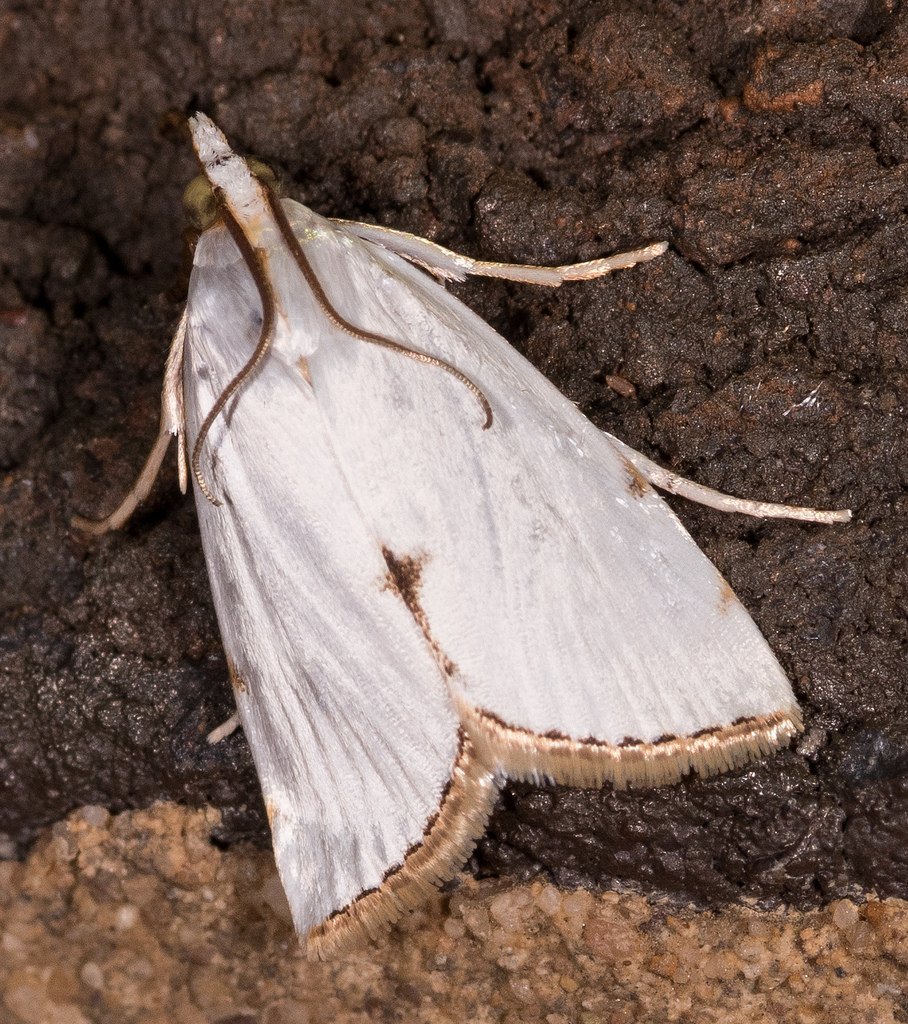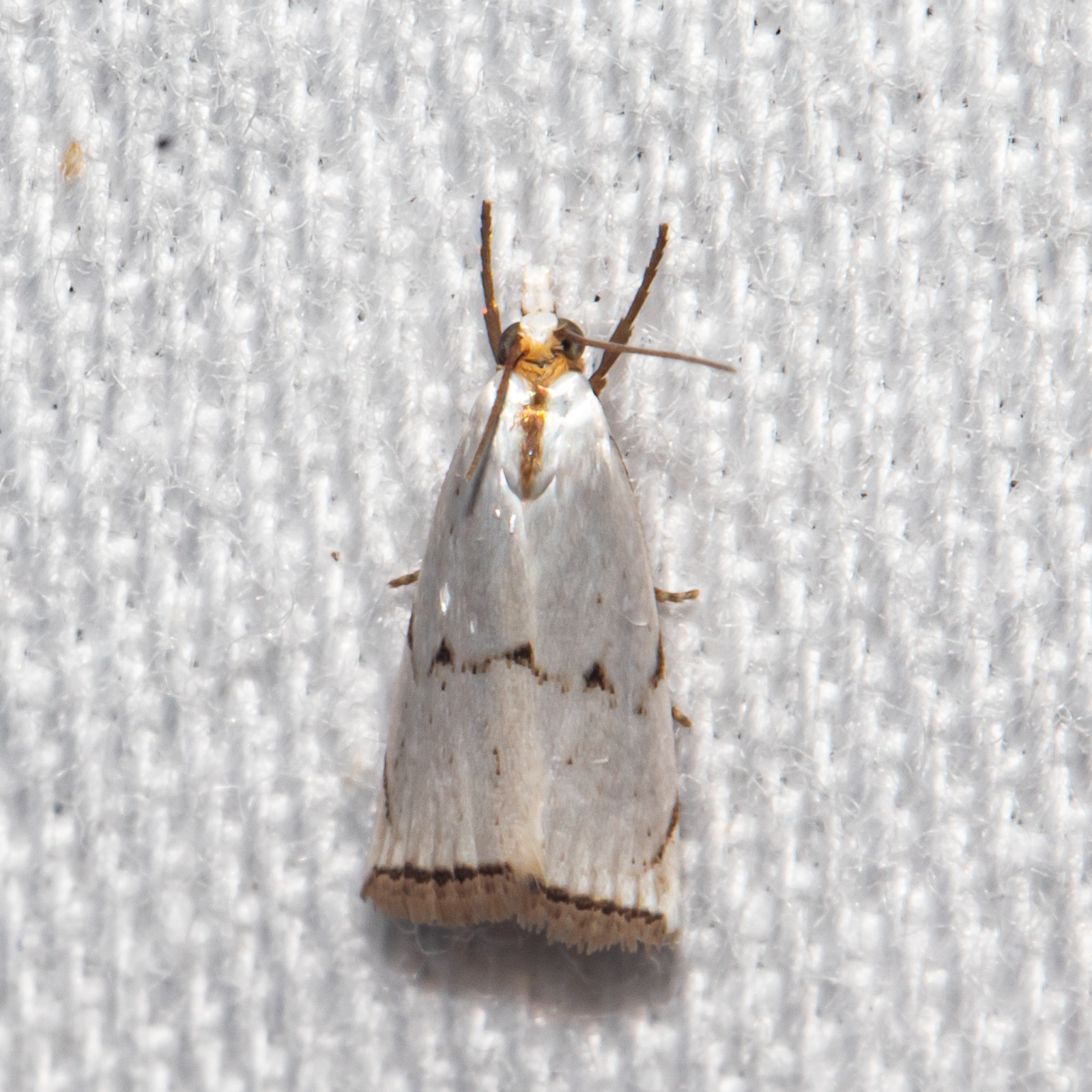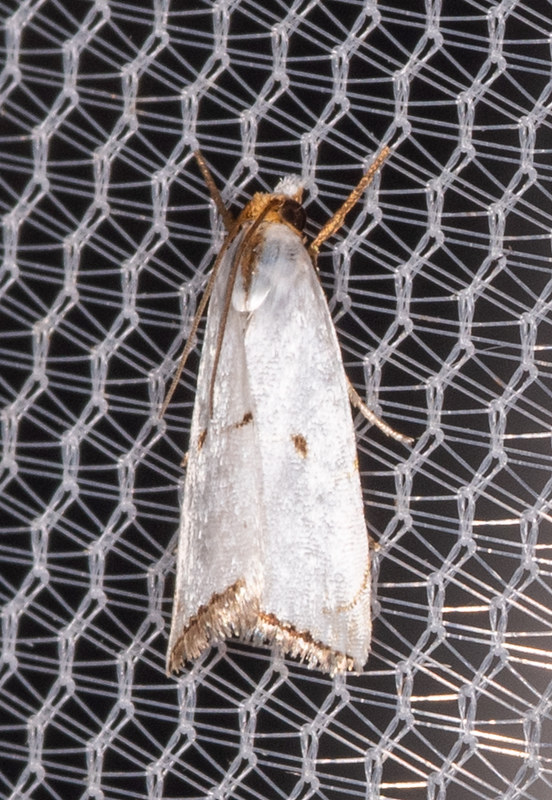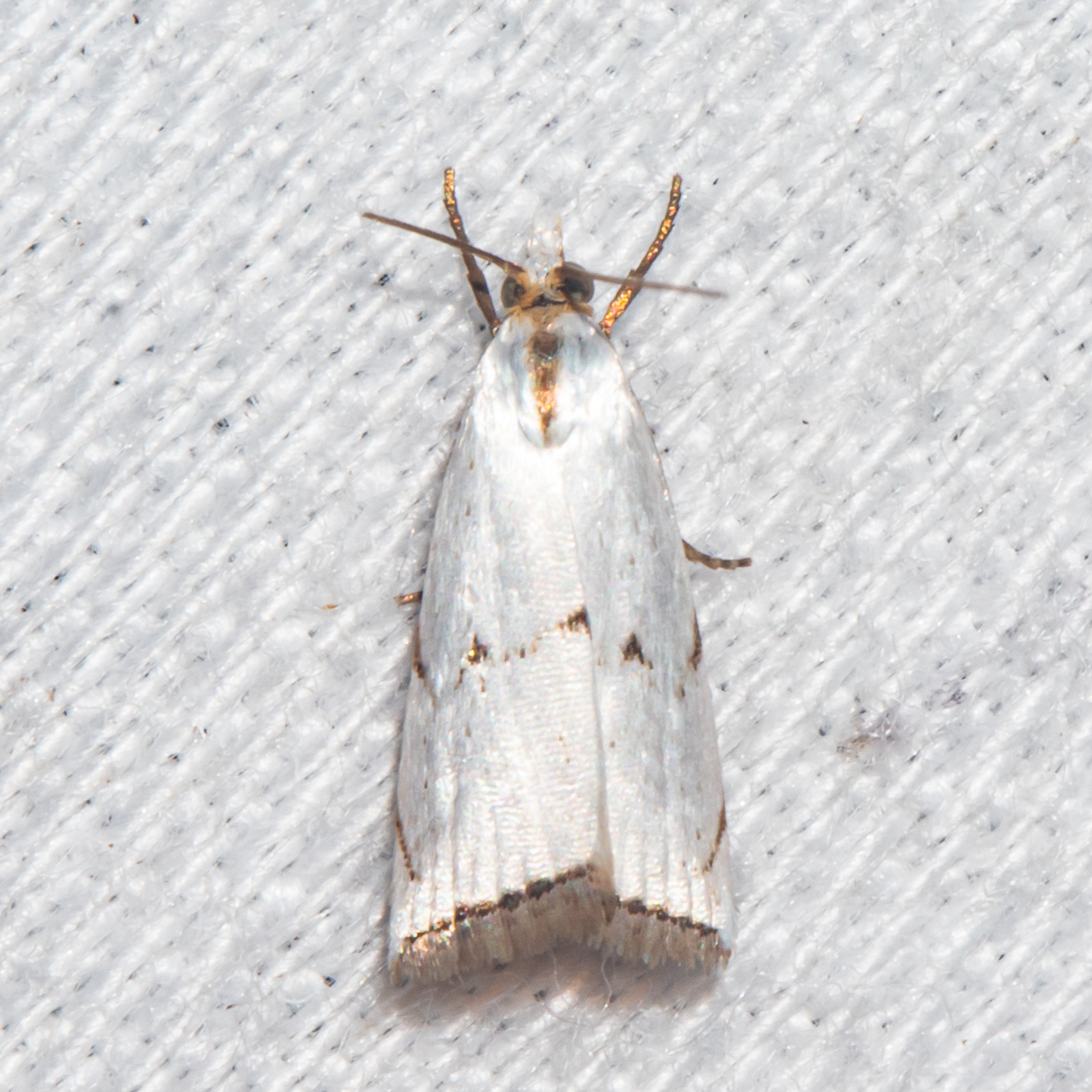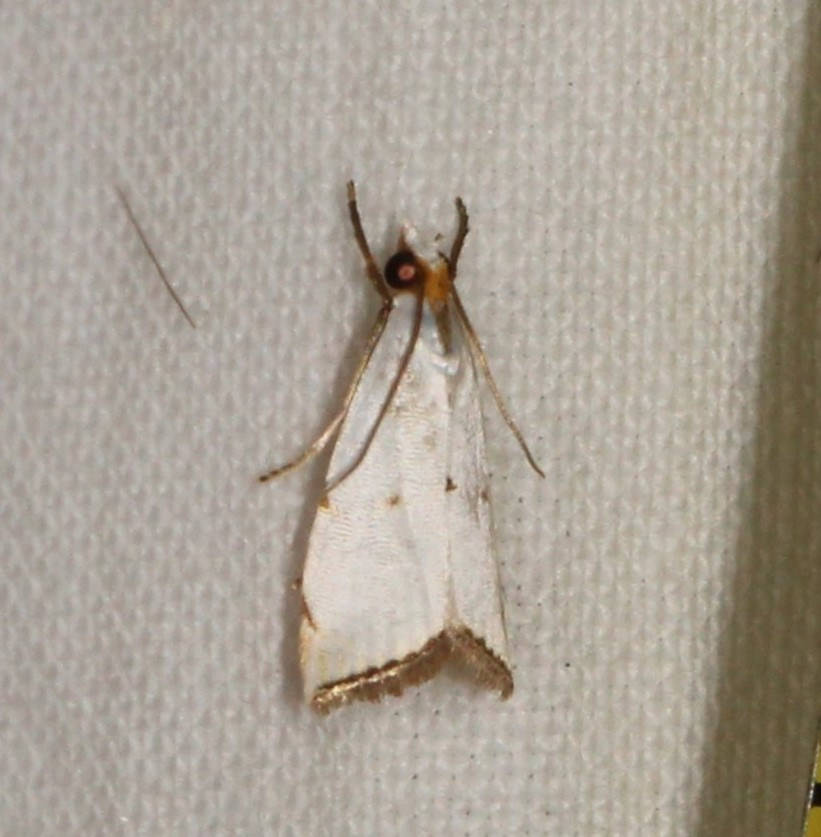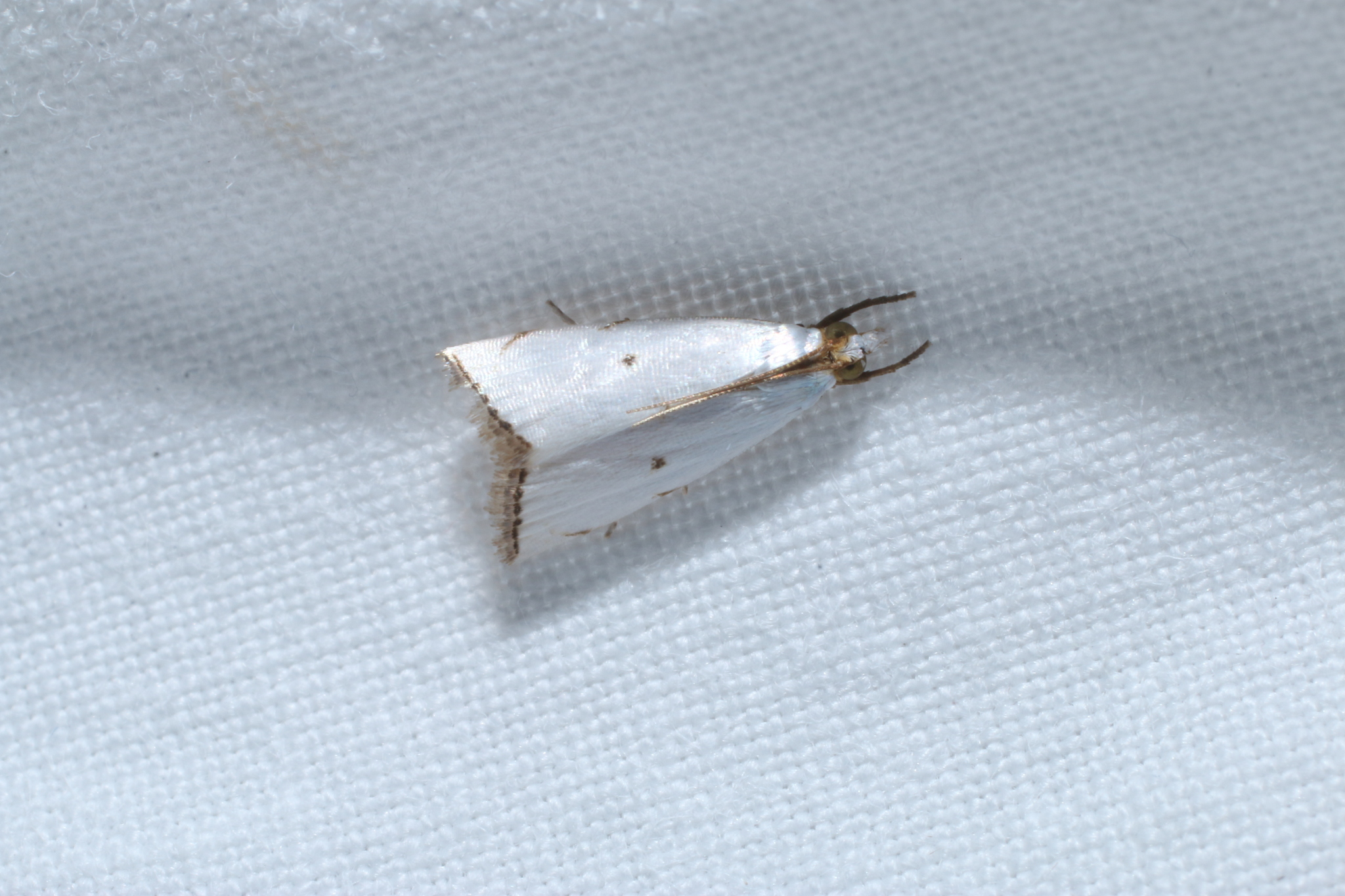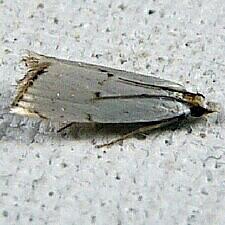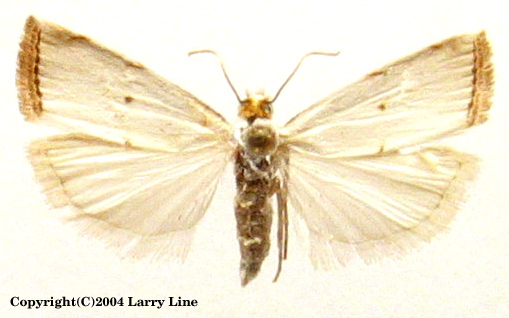Map Snapshot







15 Records
Status
"Argyria gonogramma Dyar, 1915, listed as a synonym of Argyria lacteella (Fabricius, 1794) in Munroe (1995), is treated as a full species in Landry et al. (2023) and includes as a synonyms Argyria pusillalis Hübner, 1818 and Argyria lacteella of authors not Fabricius, 1794. True lacteella is not found north of Florida." (BugGuide)
Seasonality Snapshot
Use of media featured on Maryland Biodiversity Project is only permitted with express permission of the photographer.
A Milky Urola Moth in Frederick Co., Maryland (5/30/2017). Verified by Bob Biagi/BugGuide.rn
View Record Details
Media by
Mark Etheridge.
Milky Urola Moth in Anne Arundel Co., Maryland (9/14/2021). (c) Timothy Reichard, all rights reserved.
View Record Details
Media by
Timothy Reichard.
A Milky Urola Moth in Dorchester Co., Maryland (10/2/2019).
View Record Details
Media by
Mark Etheridge.
Milky Urola Moth in Anne Arundel Co., Maryland (9/14/2021). (c) Timothy Reichard, all rights reserved.
View Record Details
Media by
Timothy Reichard.
A Milky Urola Moth in Harford Co., Maryland (7/6/2018). Verified by Kyhl Austin/BugGuide.
View Record Details
Media by
Dave Webb.
Milky Urola Moth in St. Mary's Co., Maryland (8/25/2022). (c) jtylerbell, some rights reserved (CC BY-NC).
View Record Details
Media by
Tyler Bell.
A Milky Urola Moth in Florida (3/6/2007).
View Record Details
Media by
Bob Patterson.
A Milky Urola Moth collected by John Glaser in Prince George's Co., Maryland (10/12).
View Record Details
Media by
Larry Line.
Source: Wikipedia
| Argyria lacteella | |
|---|---|
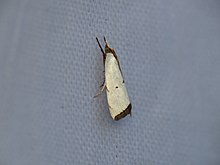
| |
| Scientific classification | |
| Domain: | Eukaryota |
| Kingdom: | Animalia |
| Phylum: | Arthropoda |
| Class: | Insecta |
| Order: | Lepidoptera |
| Family: | Crambidae |
| Genus: | Argyria |
| Species: | A. lacteella
|
| Binomial name | |
| Argyria lacteella (Fabricius, 1794)
| |
| Synonyms | |
| |
Argyria lacteella, the milky urola moth, is a moth in the family Crambidae. It was described by Johan Christian Fabricius in 1794.[1] It is found in North America, from Maryland south to Florida and west to Texas. In the south, the range extends through Costa Rica to Brazil. It is also found on Cuba, Puerto Rico and Bermuda.
Adults are on wing from spring to fall.[2]
References
[edit]- ^ Nuss, M.; et al. (2003–2017). "GlobIZ search". Global Information System on Pyraloidea. Retrieved 2014-07-15.
- ^ Bug Guide
